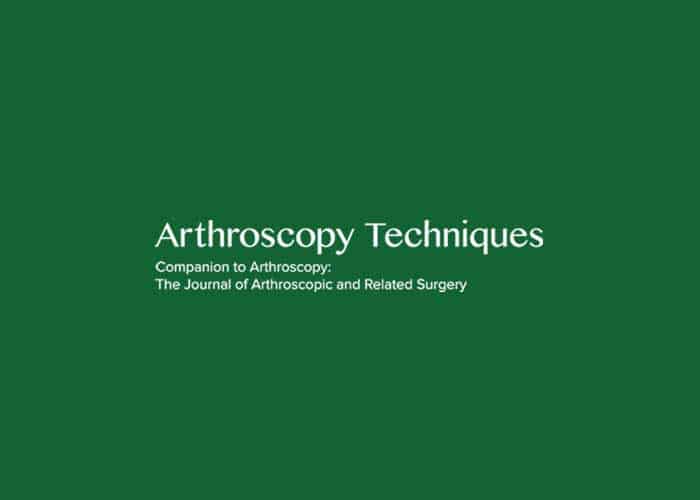
2017 Arthroscopy
Proximal hamstring tears are among the most common sports-related injuries and are frequently seen during eccentric muscle contractions, forced hip hyperflexion, and ipsilateral knee extension and fall accidents.1,2 The hamstring muscle group consists of 3 posterior thigh muscles, including the semimembranosus, semitendinosus, and the biceps femoris muscles. The tendon of the long head of the biceps femoris inserts laterally into the ischial tuberosity, while the tendon of the semitendinosus inserts medially. These 2 tendons merge to form the conjoined tendon. The semimembranosus tendon inserts laterally into the ischium, anterolateral to the footprint of the conjoined tendon.
Injuries to this muscle complex can result in signifi- cant disability, prolonged recovery, and loss of time from sport. Several classification systems for hamstring injuries have been developed. Traditionally, hamstring injuries have been classified according to their clinical presentation ranging from grade 1 to grade 3. This classification system includes grade 1 (mild): over-stretching but minimal loss of the structural integrity of the muscle-tendon unit; grade 2 (moderate): partial tear; and grade 3 (severe): total rupture.4 Wood et al. described a classification system based on anatomic location of injury, degree of tear (partial or complete), degree of muscle retraction, and involvement of the sciatic nerve (sciatic nerve tethering). Type 1 injuries are osseous avulsions, type 2 are tears at the musculotendinous junction, type 3 are incomplete tendon avulsions, type 4 are complete tendon avulsions with no or minimal retraction, and type 5 are complete tendon avulsions with retraction of the tendon ends. Type 5 may be associated with sciatic nerve tethering (type 5b).
Injuries to the hamstring muscle complex can be largely separated into injuries of the muscle belly and those of the proximal tendon. Although most injuries to this muscle group are categorized as muscle strains, 12% represent a tear or avulsion of the proximal attachment at the ischial tuberosity. Muscle strain and injuries to the musculotendinous junction can be treated successfully with nonoperative management. However, significant injuries, such as proximal tendon avulsions, treated nonsurgically have been reported to yield poor outcomes. When surgical treatment is war- ranted, early intervention within the first 4 weeks is recommended in patients with either a 2-tendon tear/ avulsion with more than 2 cm retraction or those with complete 3-tendon tears. Surgical treatment can be performed in the chronic phase (>4 weeks), but it is often challenging because of scar tissue formation, which causes increased difficulty of a neurolysis of the sciatic nerve and mobilization of the retracted tendons.
Because treatment of proximal hamstring avulsion injuries can be challenging for both diagnosis and management, the purpose of this Technical Note is to describe our preferred approach for surgical repair of proximal hamstring tears and provide an overview of the rehabilitation protocol following surgery.
Full Article: Repair of Proximal Hamstring Tears: A Surgical Technique
